Harry Angel and 'ham' radio
By R. Hillier - Librarian, State Library of Queensland | 12 August 2016
The State Library of Queensland recently received a donation of an extensive collection of amateur radio QSL cards, previously belonging to Brisbane amateur radio enthusiast Harry Angel.
Born near Fulham, England in 1891, Harry arrived in Australia as a young sailor in 1912. Soon after he enlisted in the Australian Army at the outbreak of World War One and left with the 1st Battalion AIF on the first troopship to the Middle East. He settled in Brisbane after the war and, inspired by his signalling experience in Egypt, later sat for his amateur radio license in 1935, beginning 63 years as a radio 'ham'. Over the following decades, Harry accumulated the QSL cards that make up this collection.
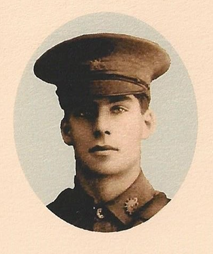
Harry Angel during his World War One service. Used with permission from the Redcliffe & District Radio Club.
At first glance these colorful cards give every impression of being regular postcards, however their purpose is entirely different. Instead, they serve as a confirmation of radio contact between two amateur radio enthusiasts, potentially from opposite corners of the world.
Amateur radio (or 'ham radio') first became a popular pursuit in the early 20th century and for the last 100 years has occupied enthusiasts in back sheds and radio rooms the world over. Differentiated from commercial broadcasting, public safety radio and professional two-way radio services, amateur radio simply involves a non-commercial exchange between two operators.
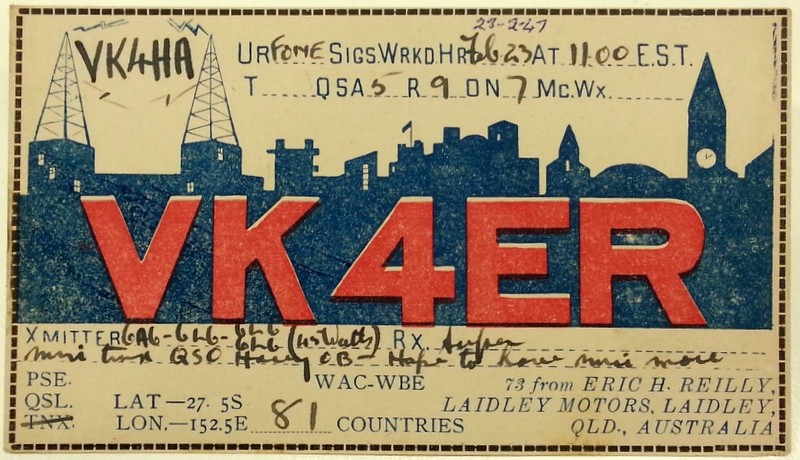
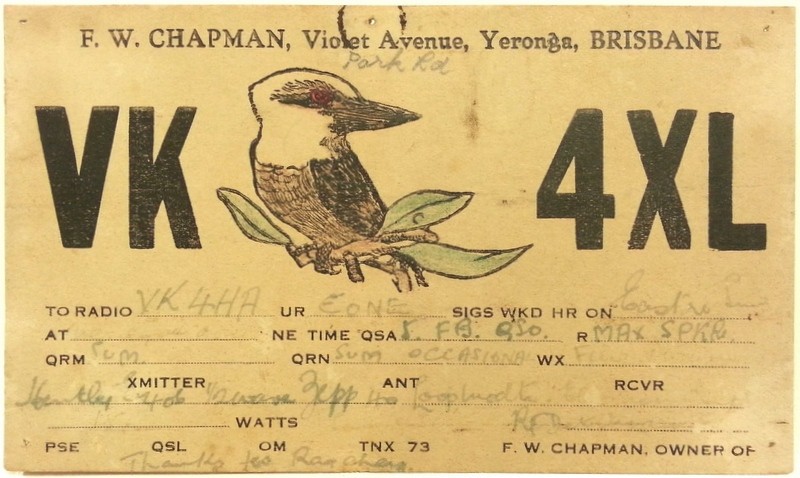
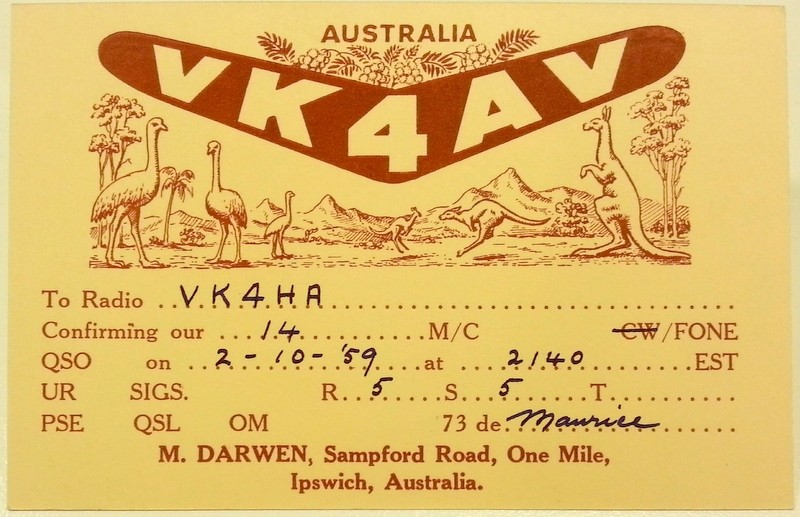
Queensland QSL cards sent to Harry Angel. Images from 30149 Harry Angel QSL Card Collection, John Oxley Library, State Library of Queensland
Each amateur radio operator requires a government issued call sign to legally operate. These call signs are unique and are used for identification purposes and geographical location. Each country of the world has a unique prefix to their call sign. For example, Harry Angel's call sign, VK4HA includes 'VK' (the country code for Australia), as well as '4' (a region/territory code that in this case indicates Queensland), and two letters, 'HA', that are his unique identification.
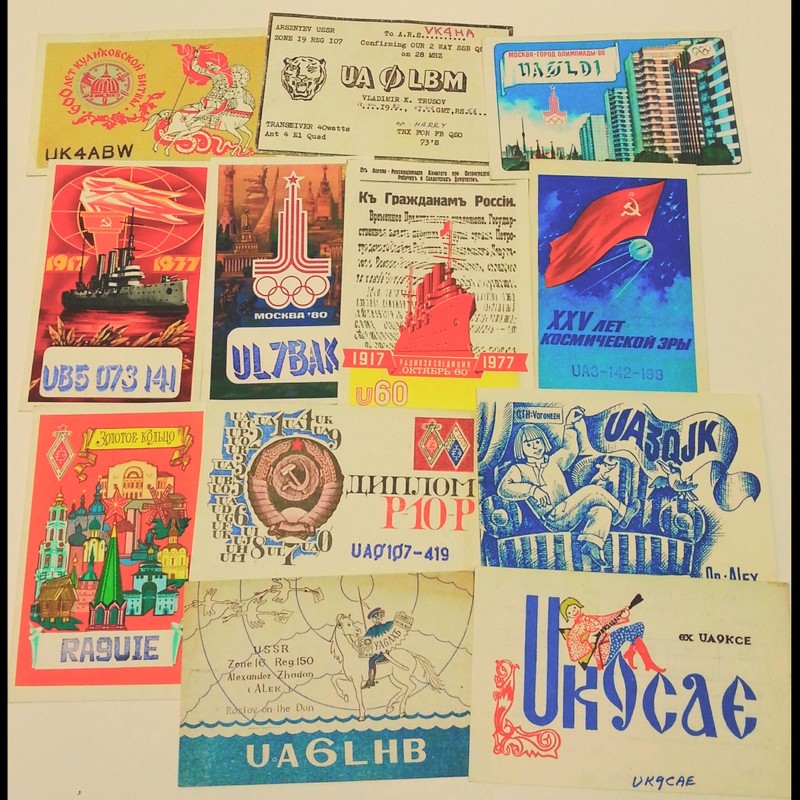
A selection of Russian QSL cards sent to Harry Angel. Image from 30149 Harry Angel QSL Card Collection, John Oxley Library, State Library of Queensland
QSL cards, such as those in this collection, represent the contact made between two operators, whether it be made across town or with far away countries. Traditionally, once radio contact was made, operators would send a card via post that verified and detailed their contact. These cards are highly personalised and often very decorative. Today, QSL cards are highly collectible among some radio enthusiasts, and it is considered a badge of honour to have QSL cards representing contact with operators in far distant or obscure locations. In recent decades, internet verification of contact has seen a decrease in the use of traditional QSL cards.
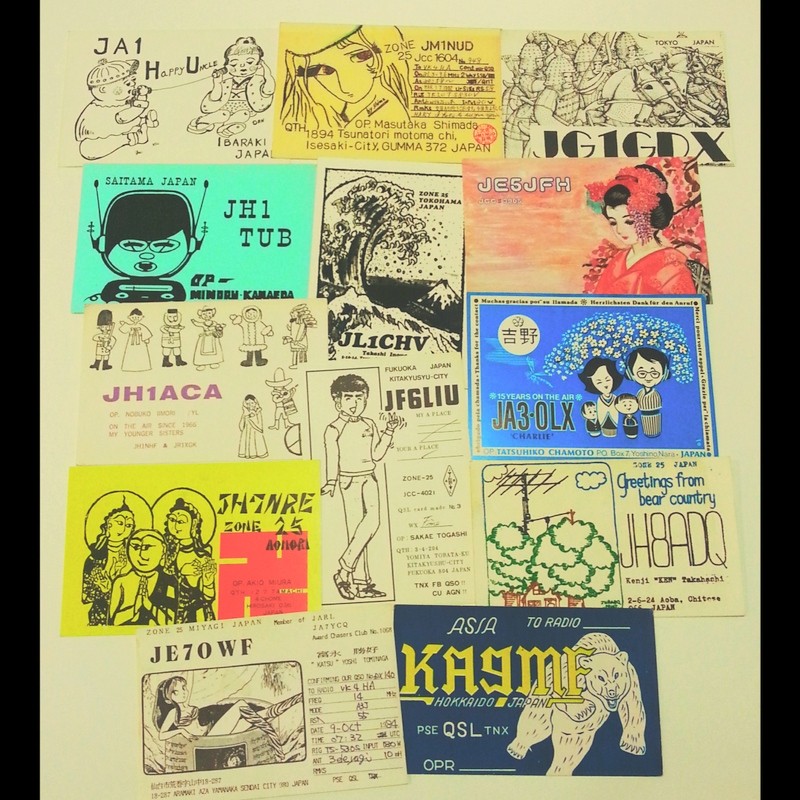
A selection of Japanese QSL cards sent to Harry Angel. Image from 30149 Harry Angel QSL Card Collection, John Oxley Library, State Library of Queensland
In August 1998, aged 106, Harry Angel passed away, becoming a 'silent key' - ham radio terminology for a deceased amateur radio operator. When he died, Harry was the oldest licensed amateur in Australia, if not the world, and was considered an icon of amateur radio in Australia. From 1999, an annual amateur radio contest was established to commemorate his life. The Harry Angel Memorial 80m Sprint is still going strong, holding the latest round in May 2016.
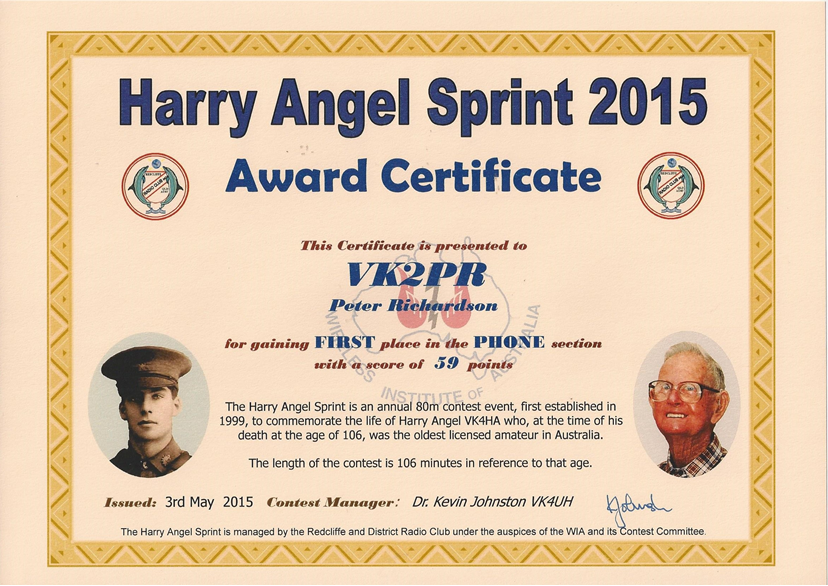
Award certificate from the Harry Angel Sprint, 2015. Used with permission from the Redcliffe & District Radio Club.
The Harry Angel QSL Card Collection can be accessed in its entirety in the John Oxley Library Reading Room on LVL 4 of the State Library of Queensland. You can view the collection record in our One Search catalogue.
R Hillier - Original Material Library, State Library of Queensland
Comments
Your email address will not be published.
We welcome relevant, respectful comments.